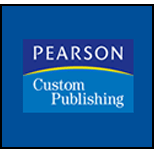
(a)
Interpretation: The statement, every spring,onehas congestion and a runny nose should be classified as an observation, a hypothesis, an experiment of a conclusion.
Concept Introduction: In research, observation must be the first step. This step decides the direction of research. The hypothesis can be defined as the thought that one assumes to be found or it can be the prediction of specific belief about the scientific idea. An experiment is the research based on scientific ways and methods that gives final conclusion of the experiment.
(b)
Interpretation: The statement, an overweight patient decides to exercise more to lose weightshould be classifiedas an observation, a hypothesis, an experiment of a conclusion.
Concept Introduction: In research, observation must be the first step. This step decides the direction of research. The hypothesis can be defined as the thought that one assumes to be found or it can be the prediction of specific belief about the scientific idea. An experiment is the research based on scientific ways and methods that gives final conclusion of the experiment.
(c)
Interpretation: The statement, many research studies have linked obesity to heart disease should be classified as an observation, a hypothesis, an experiment of a conclusion.
Concept Introduction: In research, observation must be the first step. This step decides the direction of research. The hypothesis can be defined as the thought that one assumes to be found or it can be the prediction of specific belief about the scientific idea. An experiment is the research based on scientific ways and methods that gives final conclusion of the experiment.
Want to see the full answer?
Check out a sample textbook solution
Chapter 1 Solutions
EP BASIC CHEMISTRY-STANDALONE ACCESS
- Calculate the pH and the pOH of each of the following solutions at 25 °C for which the substances ionize completely: (a) 0.000259 M HClO4arrow_forwardWhat is the pH of a 1.0 L buffer made with 0.300 mol of HF (Ka = 6.8 × 10⁻⁴) and 0.200 mol of NaF to which 0.160 mol of NaOH were added?arrow_forwardDetermine if the following salt is neutral, acidic or basic. If acidic or basic, write the appropriate equilibrium equation for the acid or base that exists when the salt is dissolved in aqueous solution. If neutral, simply write only NR. Be sure to include the proper phases for all species within the reaction. NaN₃arrow_forward
- A. Draw the structure of each of the following alcohols. Then draw and name the product you would expect to produce by the oxidation of each. a. 4-Methyl-2-heptanol b. 3,4-Dimethyl-1-pentanol c. 4-Ethyl-2-heptanol d. 5,7-Dichloro-3-heptanolarrow_forwardWhat is the pH of a 1.0 L buffer made with 0.300 mol of HF (Ka = 6.8 × 10⁻⁴) and 0.200 mol of NaF to which 0.160 mol of NaOH were added?arrow_forwardCan I please get help with this.arrow_forward
- Determine if the following salt is neutral, acidic or basic. If acidic or basic, write the appropriate equilibrium equation for the acid or base that exists when the salt is dissolved in aqueous solution. If neutral, simply write only NR. Be sure to include the proper phases for all species within the reaction. N₂H₅ClO₄arrow_forwardPlease help me with identifying these.arrow_forwardCan I please get help with this?arrow_forward
 Chemistry: Principles and ReactionsChemistryISBN:9781305079373Author:William L. Masterton, Cecile N. HurleyPublisher:Cengage Learning
Chemistry: Principles and ReactionsChemistryISBN:9781305079373Author:William L. Masterton, Cecile N. HurleyPublisher:Cengage Learning
